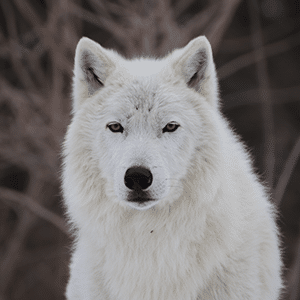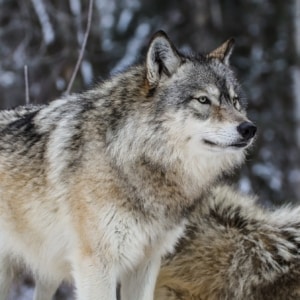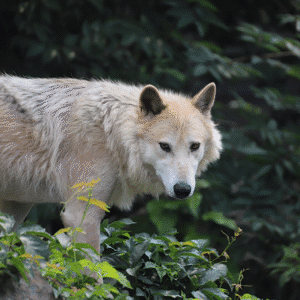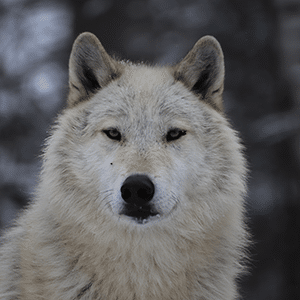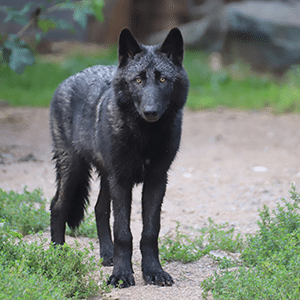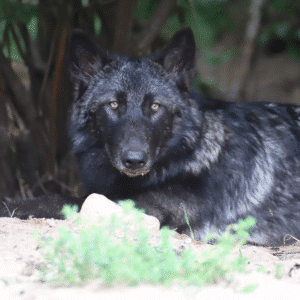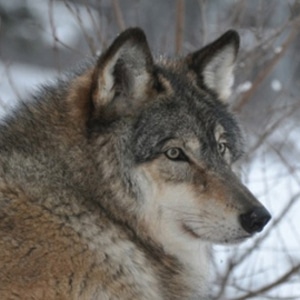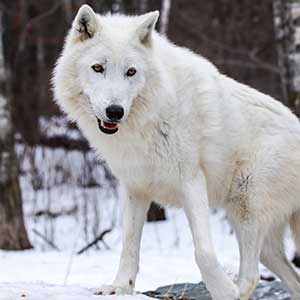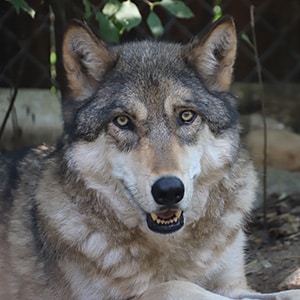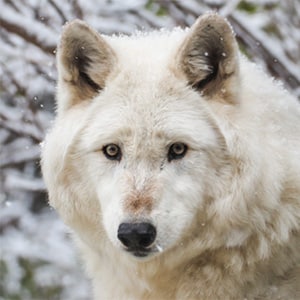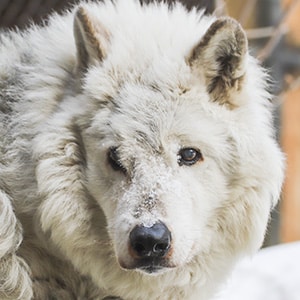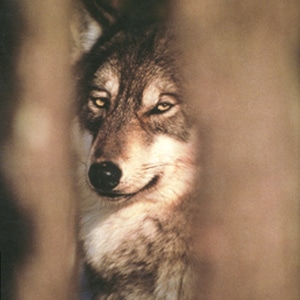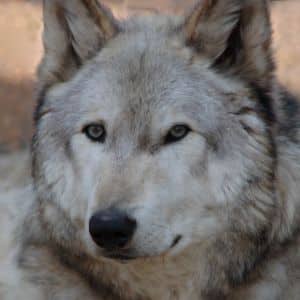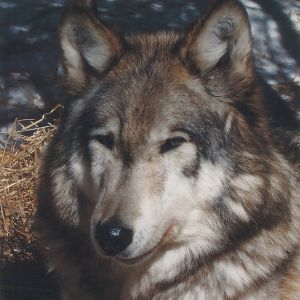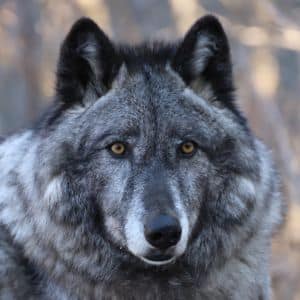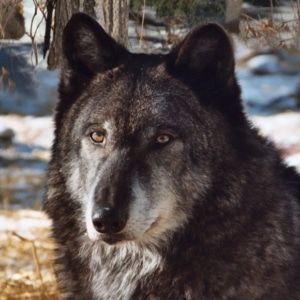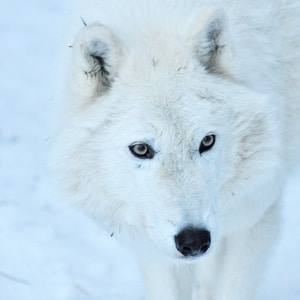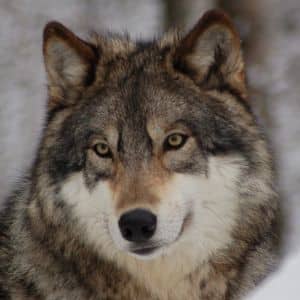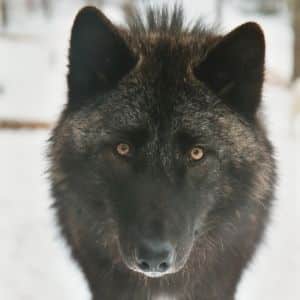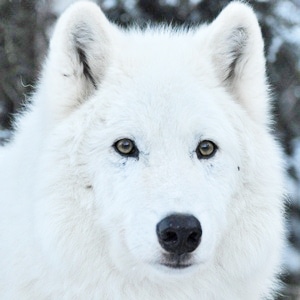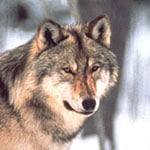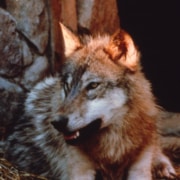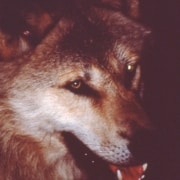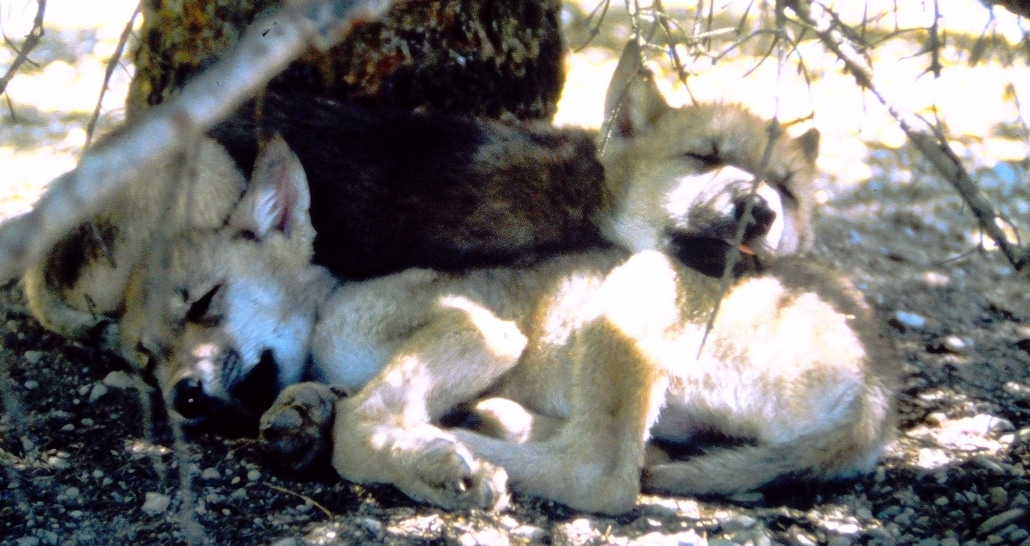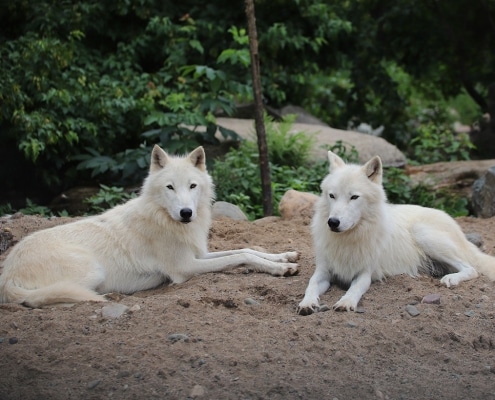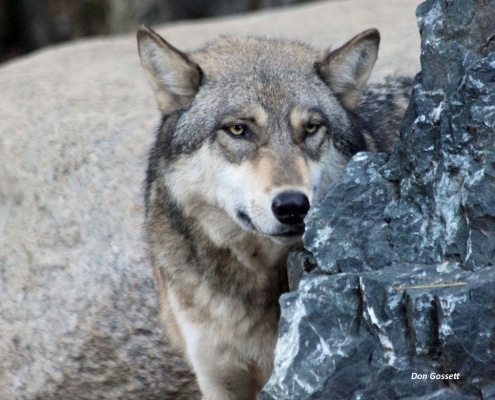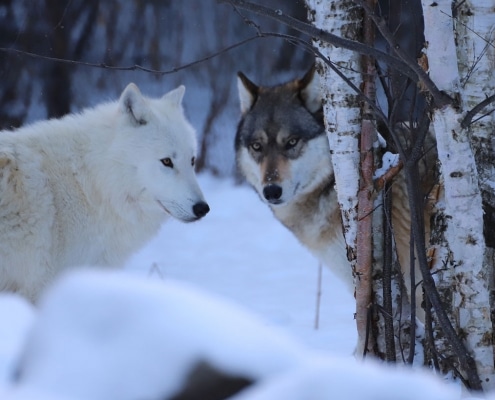The International Wolf Center maintains a live wolf exhibit where our Exhibit Pack thrives, offering in-person and virtual visitors an unforgettable educational experience. Our ambassador wolves are not just captivating to watch; they embody our commitment to wolf education. They create a personal connection that enhances our visitors’ understanding and appreciation of wolves. Our wolves inspire curiosity and a deeper respect for the natural world in every encounter, embodying our mission to educate and engage everyone interacting with them.
Meet Our Exhibit Pack
Our main wolf enclosure includes our Exhibit Pack, which our in-person visitors at the Center can view. As time goes on, the pack may change as wolves age and new pups are introduced and socialized.
As of 2025, the Exhibit Pack includes six ambassador wolves: Grayson, an arctic gray wolf born on May 2, 2016; Rieka, born on May 23, 2021; Blackstone and Caz, both born on April 6, 2022; and Cedar and Rowan, both born on April 22, 2025.
Your support can make a significant difference for our ambassador wolves. By donating, you help with the socialization of our adorable pups, ensure ongoing care for our ambassadors, or honor the legacy of our “Gone But Not Forgotten” wolves. Every contribution is vital in providing essential care for both our current and future wolf pack members. Thank you for supporting these incredible creatures!
You can support the ongoing care of our ambassador wolves in several ways, such as through membership, donations, Wolf Guardian Sponsorships, Amazon Wishlist and Chewy Wishlist. Thank you for your support!
Meet Our Retired Pack
As of January 28, 2022, no wolves exist in the Center’s Retired Pack.
The Retired Pack was formed in 2002 when the 1993 litter was systematically tested for weaknesses. The instigators of those testing behaviors were Shadow and Malik, the arctic wolves who were born on May 8, 2000. Testing is a natural process that occurs in the wild as well as with ambassador wolves. The difference is that wild wolves are free to leave their pack or disperse in the wild. For our ambassador wolves, the wolf care team has to make that decision for the wolves. Since its inception, several wolves have transitioned into retirement based on pack dynamics or aging health conditions. The wolf care team diligently ensures that the wolves’ quality of life is the focus of care in those final years.
When we move a wolf into the Retired Pack, it is not directly on public display (the whole idea of retirement is to get some relief from the sights and sounds of a busy exhibit); we continue to provide YouTube videos, webinars, and webcams positioned throughout the retirement area.
Gone But Not Forgotten
This section is dedicated to our ambassador wolves who have since passed away, known as the “Gone But Not Forgotten” wolves. This section serves as a tribute to these wolves, who provided invaluable educational experiences during their lives and taught us many important lessons.
In the wild, wolves thrive due to their strong social bonds with pack members, defined rank order, and their ability to recognize vulnerability in both prey and pack mates. However, these instincts can make it challenging to manage wolves in a captive environment. Despite these challenges, we are dedicated to providing the best possible care for our wolves.
If you would like to honor our “Gone But Not Forgotten” ambassador wolves, please consider making a donation in their memory.
Axel
Boltz
Denali
Grizzer
Kiana
Lakota
Mackenzie
Shadow
The 1989 Litter
The history of the Center’s ambassador wolves begins with a pack of four pups born on April 24, 1989, at a USDA-licensed facility in Rochester, Minnesota. These wolves served as educational ambassadors during the summer seasons of 1989, 1990, and 1991. The Center selected two males, Jedadiah and Ballazar, and two females, Raissa and Bausha. From May 30 to October 1, they were exhibited at a seasonal exhibit, while during the winter, they spent their time in a large wooded enclosure at the home of the Wolf Curator, Lori Schmidt.
By four months of age, Bausha and Raissa’s rank-order dominance began to increase. With ambassador wolves, it’s up to the wolf care team to manage pack compatibility. By the fall of 1989, both females appeared to have dominant tendencies, and neither seemed to submit, creating intense interactions. In the wild, a situation of competing rank order may be a stimulus for one of the wolves to disperse. The wolf management team decided that placing one of the females at another facility would be best. Consequently, Raissa became a dominant female at Brown County Reforestation Camp in Green Bay, Wisconsin, on Labor Day weekend in 1989.
It was apparent that the wolves’ isolation during the winters at the Wolf Curator’s property created some behavioral changes related to large public displays. With each consecutive summer and their return to the visitor center in Ely, the wolves became shyer towards viewing. The management team decided that finding alternative options for the remaining 1989 littermates was best. In 1991, Ballazar joined the Sawtooth Pack in Stanley, Idaho, filmed by Jim Dutcher for an ABC production titled “The Wolf: Return of a Legend.”
In the fall of 1992, the possession of Jedadiah and Bausha was transferred to the Wolf Curator, Lori Schmidt. Even though the Center was only seasonal during the time this litter was on display, thousands of visitors viewed these wolves. The educational programs related to this litter played a crucial role in helping the Center establish itself as a science-based educational Center in Ely, Minnesota.

